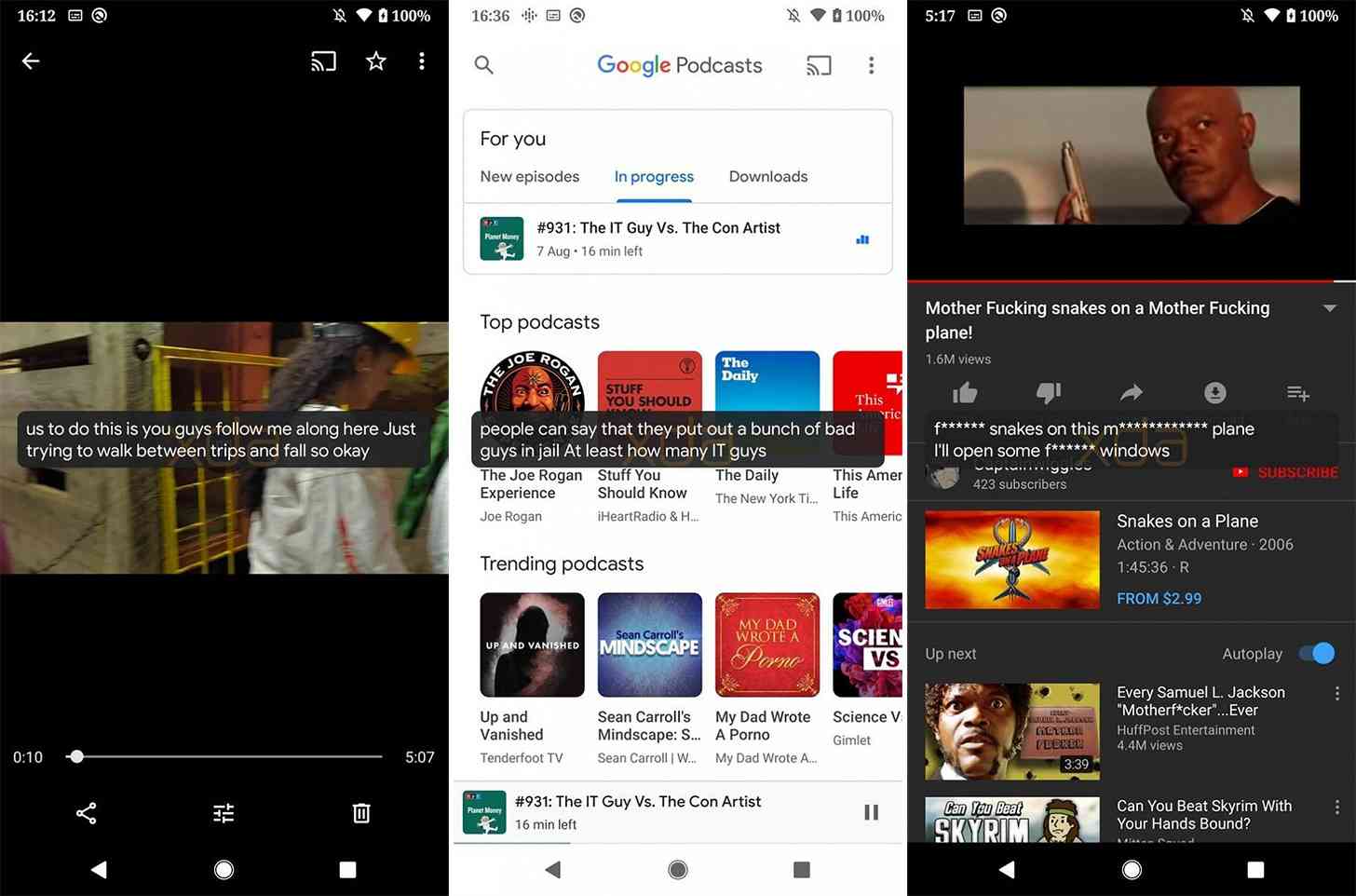Live Caption is one of the major new features of Android 10, but it's not currently available on any devices. Thanks to a new leak, though, we're getting to see Live Caption in action right now.
A new video has surfaced that shows Live Caption working on a Pixel 2 XL and providing captions for a YouTube video. The folks at XDA-Developers got hold of a Device Personalization Services APK from a Pixel 4 and, after some tweaks, Live Caption was enabled.
The settings for Live Caption give you the ability to change the language, though English is the only one supported right now, and there's also a Mask Profanity setting that'll change swear words to asterisks in the Live Caption. You also have the option to put a Live Caption button in the volume control panel for easier access. There's a demo video and a text explanation to help new users understand how Live Caption works, too.

Once enabled, Live Caption puts the caption text in the middle of the screen when the device is in portrait orientation and near the bottom of the screen when in landscape. You can drag the caption around the screen to reposition it or double tap it to expand it. The demo video shows Live Caption working during a OnePlus 7T unboxing and it's generally pretty accurate, though there are a couple of small errors, like when the Live Caption refers to the OnePlus 7T as "OnePlus 17".
Live Caption hasn't appeared on any Android 10 devices yet, so it's possible that it'll launch with the Pixel 4 that's making its official debut in a couple of weeks.
From what we've seen of it so far, Live Caption looks like it could be a pretty great addition to Android 10. With it, you'll be able to get captions for the media playing on your phone, including videos, podcasts, and audio messages. What's more, it'll work without needing Wi-Fi or cellular data, so users won't have to worry about maintaining an internet connection just to get a caption for a piece of audio or video.